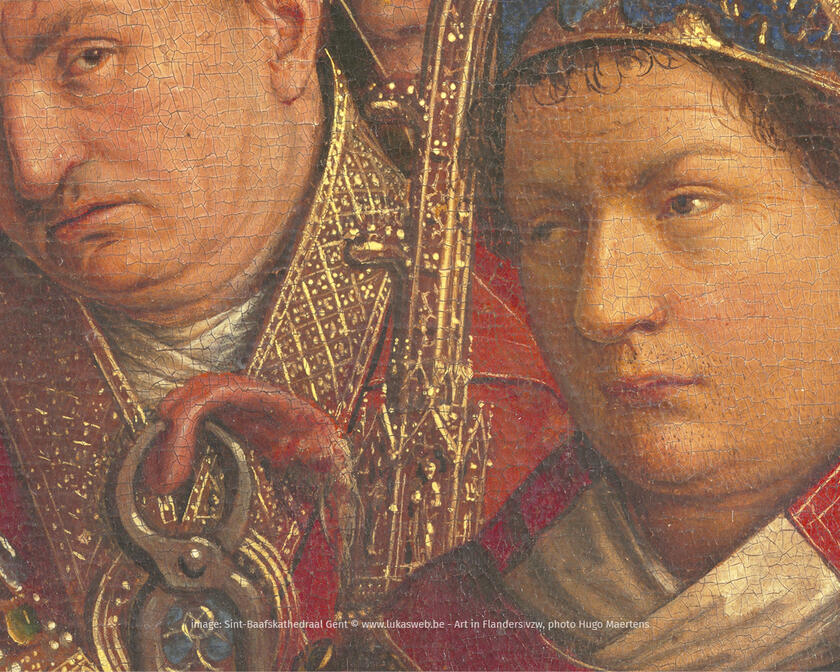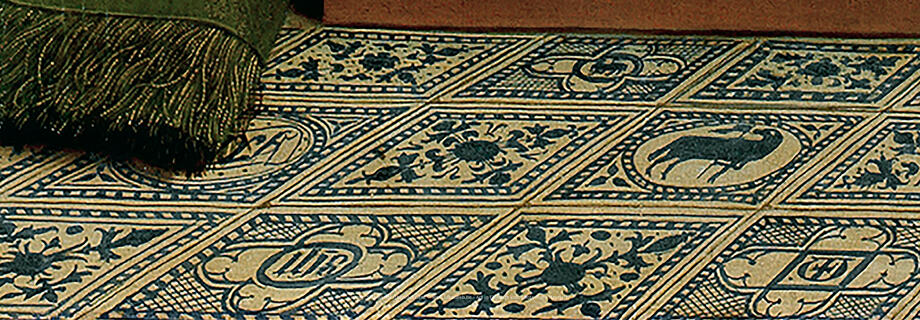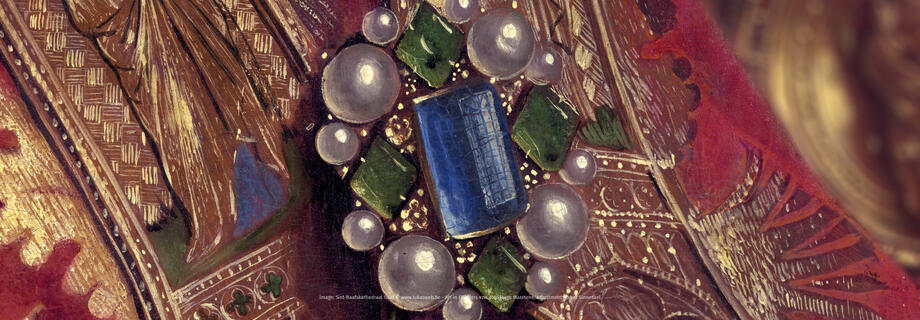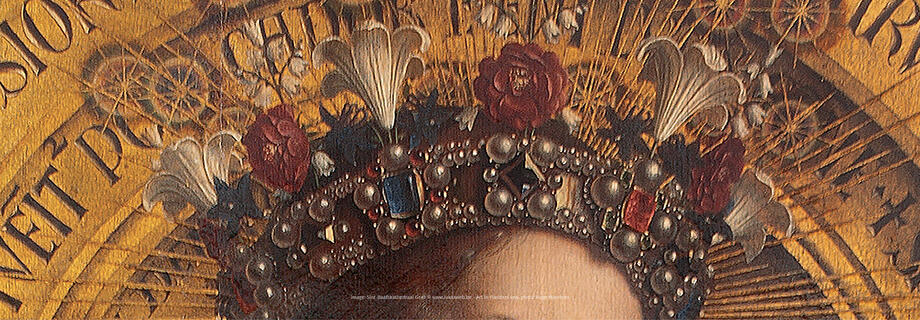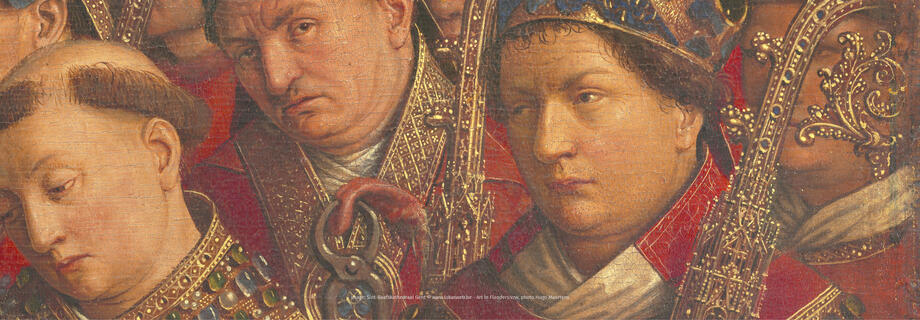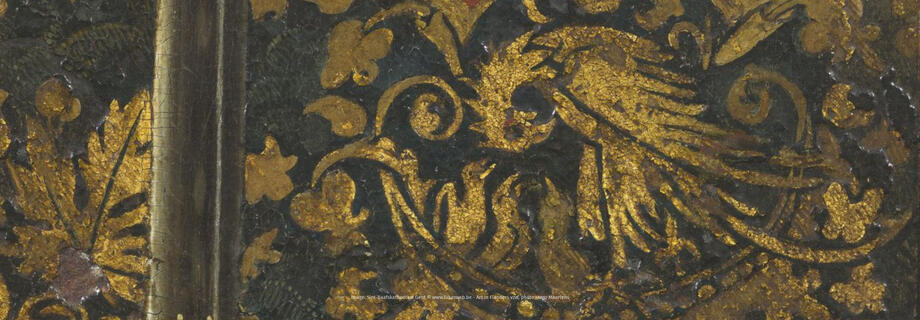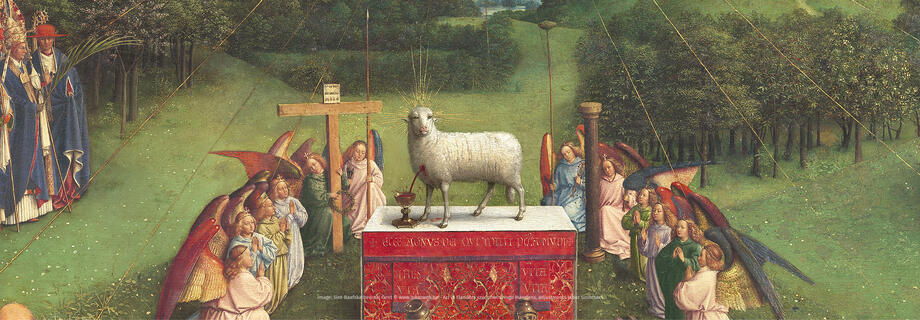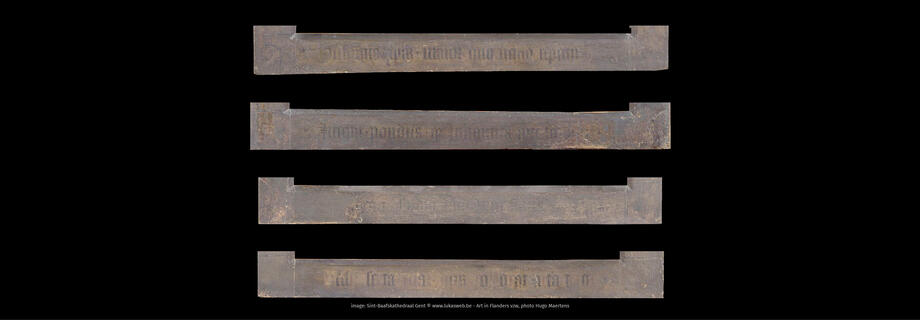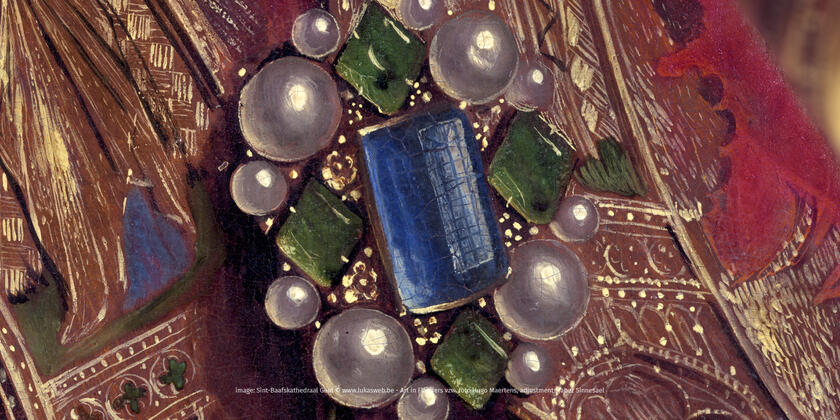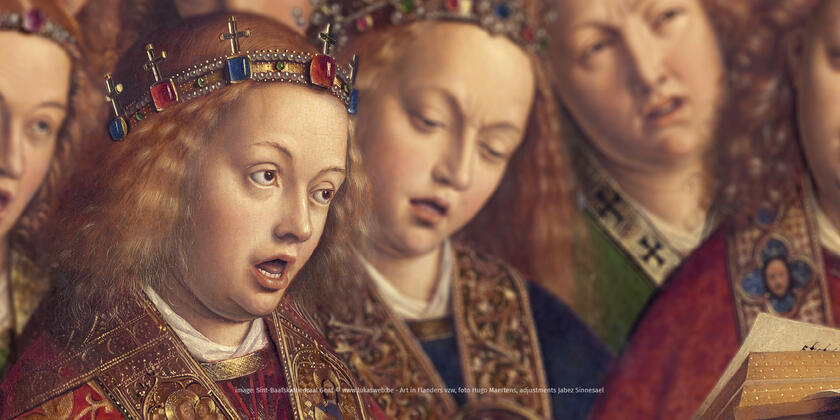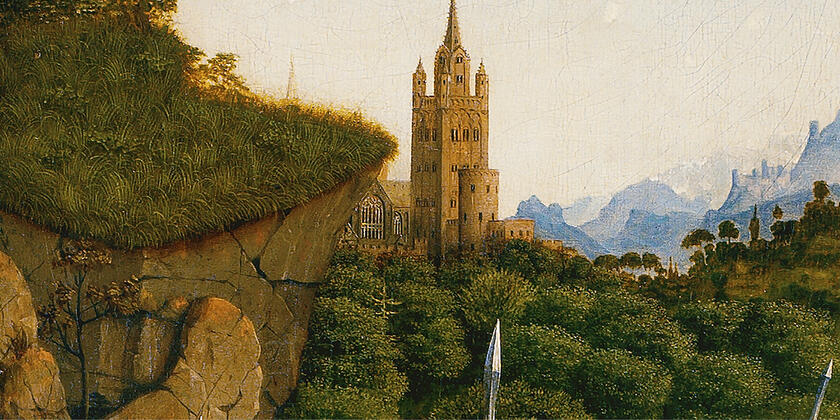7. Quatrain
Van Eyck filled not only the panels with countless details, but also the frames. In 1823, during the cleaning of the frames of the outer side panels, a quatrain (a poem consisting of four lines) was discovered. And Jan Van Eyck would not be Van Eyck if he did not do something special with it. In the last line a number of letters have been marked. If you add up the Roman numerical value of these letters, you get the number 1432, the year in which the Ghent Altarpiece was revealed.
Pictor Hubertus e Eyck . maior que nemo repertus
Incepit . pondus . q[ue] Johannes arte secundus
[Frater] perfecit. Judoci Vijd prece fretus
VersU seXta MaI . Vos CoLLoCat aCta tUerI
The quatrain can be translated as follows:
The painter Hubert Van Eyck, greater than whom no one was found, began this work. His brother Jan, second in art, having completed this difficult task at the request of Joos Vijd, invites you by this verse to see the result on 6 May [1432].
Do you want to see the details with your own eyes? Then come to Ghent and visit the most famous altarpiece in the world!
